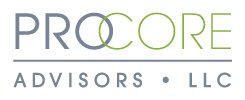
Life Style Planning
The planning process is a series of steps, when taken in sequence, may help the client reach their goals. Defining that goal is the challenge. I really believe people are so conditioned to think in terms of how much money they have at retirement that they miss connecting with their own lifestyle along the way.
We provide a life-centered approach. It would best be described as dropping a stone in the center of a calm pool of water and watching the ripple effect. When we get a client to focus on their life-style goal, the financial plan is more aligned with the client. The steps are like the ripples and move in unison centered around that goal.
This approach can prove to be interesting for clients. Sometimes we work to uncover money values and money history based on experiences or how we were taught about money (if at all). This was something I personally went through many years ago and has helped me relate to clients better.
My family grew up traveling everywhere in the U.S. We couldn’t leave the country because my mother was not a U.S. citizen and was afraid they wouldn’t let her back in if she crossed the border! My dad loved road trips but his first love was flying. My parents would dress all of my sisters and brother up in our finest clothes, white gloves and hats for the girls, and suspenders with a bow tie for my 3 year old brother. Off we would go to New York or San Francisco at a moment’s notice. We lived in resort towns on both coast and in-between. I have skied almost every major resort in the U.S. I rode bikes around Martha’s Vineyard and went to operas in New York. You get the picture.
My father would put cash in a junk drawer in the kitchen. If money was there, it was ours to spend – no accountability attached. It was always just there – kind of like an ATM machine or the debit card at the grocery store – it provided cash. My sister’s and I would shop and spend whenever we wanted. When I was in my early 20s, I decided I wanted to go to California on my own without the family to visit my grandparents. My father announced I was on my own. Didn’t dawn on me what that meant (really) at the time – until I had to start paying for things on my own. I never had to work growing up so that was a foreign idea to me as well.
I was amazed how little respect I had for money and absolutely no knowledge of how to handle it. I learned quickly, but I did suffer through eating a lot of peanut butter. This left a lasting memory that created some interesting money habits. It is the same type of thing we try to discover with our clients. It helps us help our clients with saving, spending, defining values, and creating a life-style goal.
I am still not much of a spender, but I do know that I find a great deal of happiness helping those around me with some of the wealth I have been able to save. That is important to me. My life-style goal is my family, not money. I am passionate about helping others. I love that I have had a positive impact on my children and hopefully they will have the same with their children.
Hopefully this same idea is the legacy we teach our clients and that can be carried on for generations and that our clients are more confident with the wealth being passed on to the next generation. Life planning is the goal, financial planning is just one of the steps to achieve that goal.



